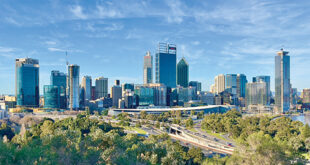
The shortage of LPG cylinders occurring currently, according to managers at some stations, is due to the fact that since the Regional Trade and Industries Office (RTIO) took over the issuance of cylinders from private distributors, the office is issuing new connections indiscriminately.
The RTIO issues 15 new connections to Thimphu City Corporation (TCC), and 10 new connections each for Druk Petroleum Corporation Ltd (DPCL) and Damchen Petroleum on a daily basis.
The manager at one of the gas stations said, “Earlier we used to issue a single new connection once a week but now numerous new connections are issued on a daily basis.”
One of them said that the gas shortage was not due to the rupee crunch because the gas cylinders’ payment was done through demand draft.
The Regional Director for RTIO, Dungtu, said that the gas shortage was there right from the beginning.
“The quota we get from the Indian government is not enough with the requirement increasing day by day”.
Asked why the responsibility of issuing new connection has been taken up by the government, the Regional Director said that people complained about being kept waiting for months, and unequal distribution of new connections by the private distributors.
Thimphu alone gets more than 700 LPG cylinders every day but this still fails to meet the demand as people from other dzongkhags come to Thimphu seeking LPG cylinders.
Tashi Commercial Corporation receives 462 cylinders every day, but the assistant manager at the station, Kuenzang Choden, said, “We start exchanging cylinders from 8:30 in the morning but the stock finishes within two hours and sometimes even half an hour.”
However, the manager for Damchen Petroleum in Wangdiphodrang which gets 80 cylinders a week said that most of the cylinders are taken by Puna Tsang chhu officials and the rest by hoteliers. Gas stations in Lobesa and Punakha acquire 70 and 100 cylinders each.
To address the problem, Dungtu said that the government is planning to request GoI to increase the quota.
In the wake of the introduction of commercial cylinders, the RTIO will inspect, seize the goods and penalize hoteliers and business outlets found hoarding or using subsidized gas cylinders.
The new cylinder will accommodate more gas and will not be sold at subsidized rates unlike the current one. Commercial gas will be introduced by a private Indian entrepreneur who has already manufactured 4000 cylinders. As soon as the entrepreneur acquires permission from the Ministry of Petroleum, Government of India (GoI), these cylinders will hit the market.
But the users will be given a notice and time frame to adapt to the new gas cylinder.
The regional director claimed to have seen hotels taking 10 or more cylinders each day and hugely affecting the stock pile for the normal public.
However, hoteliers are also left with no other option since this is the peak tourist season.
The RTIO Director said, “With the introduction of the commercial gas cylinder, the quota we get from the government of India will be more than enough for our people to use at homes”.
Earlier, shortage occurred mainly due to strikes around the Indian border towns, price hike and even when the roads leading to the capital from the border towns were damaged.
The Indian government issues around 32,392 cylinders (700MT) every month to Bhutan from which, according to the senior manager for the Tashi Commercial Corporation, (TCC) in Phuentsholing, 27,000(583.5MT) are acquired by Tashi Commercial Corporation and the remaining 116.5MT goes to Damchen petroleum and the DPCL . Tashi alone supplies 3,000 cylinders to Paro in a month while other dzonkhags like Gelephu gets around 120MT and Samdrup Jongkhar also gets 120 MT.
 The Bhutanese Leading the way.
The Bhutanese Leading the way.



